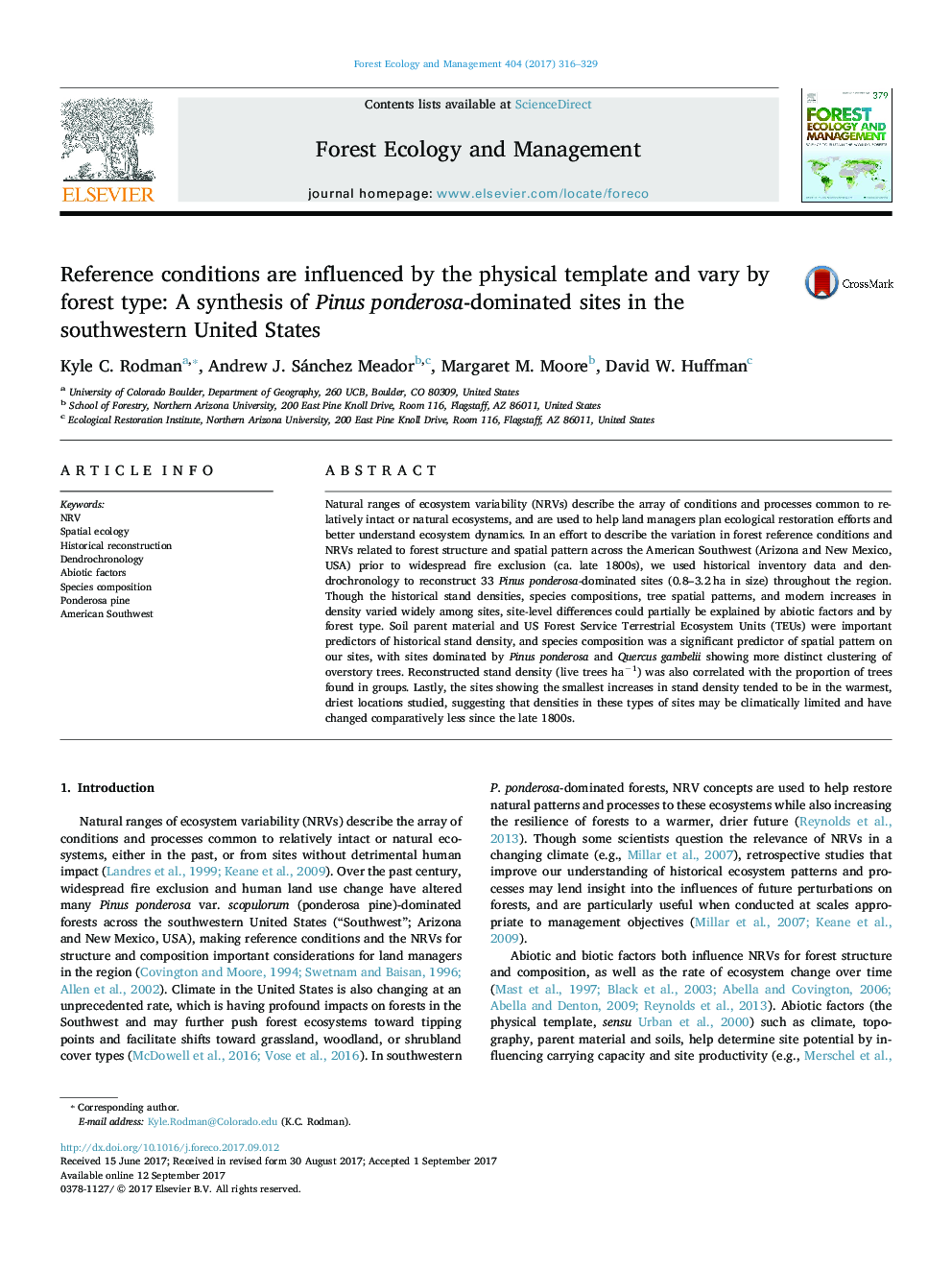| Article ID | Journal | Published Year | Pages | File Type |
|---|---|---|---|---|
| 6459179 | Forest Ecology and Management | 2017 | 14 Pages |
â¢We reconstructed forest reference conditions on 33 sites (>0.8 ha) in NM and AZ, USA.â¢Historical densities were best predicted by parent material and TEU classification.â¢Site moisture and species composition related to tree spatial patterns.â¢Denser stands contained more trees in groups and fewer single trees.â¢More xeric sites showed lower increases in stand density since ca. late 1800s.
Natural ranges of ecosystem variability (NRVs) describe the array of conditions and processes common to relatively intact or natural ecosystems, and are used to help land managers plan ecological restoration efforts and better understand ecosystem dynamics. In an effort to describe the variation in forest reference conditions and NRVs related to forest structure and spatial pattern across the American Southwest (Arizona and New Mexico, USA) prior to widespread fire exclusion (ca. late 1800s), we used historical inventory data and dendrochronology to reconstruct 33 Pinus ponderosa-dominated sites (0.8-3.2Â ha in size) throughout the region. Though the historical stand densities, species compositions, tree spatial patterns, and modern increases in density varied widely among sites, site-level differences could partially be explained by abiotic factors and by forest type. Soil parent material and US Forest Service Terrestrial Ecosystem Units (TEUs) were important predictors of historical stand density, and species composition was a significant predictor of spatial pattern on our sites, with sites dominated by Pinus ponderosa and Quercus gambelii showing more distinct clustering of overstory trees. Reconstructed stand density (live trees haâ1) was also correlated with the proportion of trees found in groups. Lastly, the sites showing the smallest increases in stand density tended to be in the warmest, driest locations studied, suggesting that densities in these types of sites may be climatically limited and have changed comparatively less since the late 1800s.
